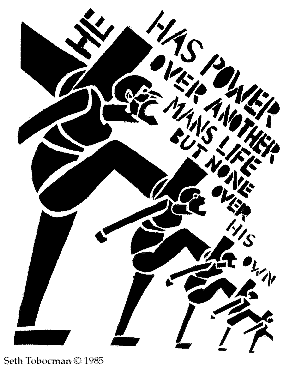Through my life journey, from
my childhood to adulthood, I have constantly struggled with hierarchical
relationships in the Egyptian society. People have power over other people. At
home, my father has power over me, my mother, my sisters, and my brother, and
my brother has power over me and my sisters, and my older sisters have power
over me because I am the youngest one. At my schools, from elementary school to high school, teachers
have power over me and over other students in the class, and the school
administration has power over my teachers. At my college, professors have power
over me and other students. I learned that there is always a group has power
over a group- a group rules, controls and exploits other. I learned the world
is hierarchical, and I must learn my place in the hierarchy because there is no
alternative to either controlling or being controlled. This paper outlines my
story with “power over” relations that shaped my present.
Once I entered school, I found
the same hierarchical relations; I found hierarchical relations between me and
my childhood teachers. I remember my fifth and sixth-grade science teacher, Mr.
Ahmed: a short man with a thick, black mustache. Mr. Ahmed was surly; I am not
sure if he can smile and laughs like us. Mr. Ahmed also spanked his students. When
we were disobedient, we had to submit to several whacks with a stick on our
hands. Each student expected to undergo this whacks at some point in the school
year. I remember my fear of Mr. Ahmed’s class- fear not of the physical pain
but, as Kreisberg (1992) describes it, the pain of “the humiliation and
submission I would be forced to experience” (p. 4). In Mr. Ahmed’s class, there
was no doubt that he had a complete control in the classroom and had the right
to govern alone, to teach from his point of view, to discipline and punish, and
to evaluate students.
Mr. Ahmed’s classroom was
designed in a way gave him power over students; that is, his chair was placed
in a special spot of power, at the front of the room near the blackboard and
behind a wood desk while students’ chairs set in rows facing the teacher’s
desk. This classroom design is what Shor (1996) describes, “Like plants growing
toward sunlight, students are expected to sit in rows facing the lecturing
teacher at the front, the unilateral authority who tells them what things mean,
what to do, and how to become people who fit into society as it is” (p. 11). This classroom design helped Mr. Ahmed
assert his power to deliver a one-way curriculum dominated with his talk. Mr. Ahmed was talking all the class
time; it seems that, as Freire (2000) puts it, our minds were empty containers
and he was a depositor who was busy filling them with his narratives.
I also remember my English
teacher in my high school, Mr. Mansour.
I remember his insisting that we memorize verb tenses and requiring to
us to write sentences explain past time, present time and future time using the
same verb. I remember his frightening voice and his obvious pleasure at
students for not knowing the correct answers. He used the pressure to enforce
his rules and impose his expectation. Mr. Mansour’s curriculum was designed in
a way that moves toward directing the students, instead of engaging them, in a
way that depends on what he thinks “best” for the students. This one-way curriculum silenced me. It
sent me a message that I am inferior to the teacher who possesses knowledge;
therefore, he can do education for me as he sees it. As a result, I have not a
say in what I learn; I have not the right to decide what I need to learn or how
I might do it. Thus, as Taliaferro-Baszile (2010) describes it, my teachers’
inner eyes became my inner eyes and “yet these distort and refract much like a
funhouse mirror” (p. 489).
At the college I graduated from, professors' power over students was more obvious than school
teachers' power. I remember Dr. Yousef insisting that students raise their hands
whenever they want to speak and wait until he decides who should speak and in what
order. I remember when one of my colleagues spoke without getting his
permission to talk; Dr. Yousef was so angry that this student interrupted him
and he asked the student to leave the class and meet him in his office after
the lecture. Dr. Yousef was the only one who can decide what and how students
should learn; as a result, the curriculum was fixed and ready-made reflects his
view, not the views of me and other students in the class. I was never asked to
relate my personal experiences, interests, needs, speech, and perceptions to
the course of study. I do not remember that he asked me or other students about
what we already know about the topic, what we know independently of the
classroom, or how we think in the context of our daily lives.
It seems that what I study at
the college and my personal experiences are in different directions and they
never meet. Ignoring my experiences conveys to me
the insignificance of my voice. Therefore, I felt that the curriculum was
something out there did not belong to me; as a result, I found a hard time
understanding what I was being taught. That is, as Slattery (2006) explains,
“in order to understand knowledge, I must experience intimacy. The knower cannot
be separated from the known, and meaning cannot be separated from the context
that gives rise to the meaningful experience” (p. 295). Therefore, I was always wondering “Why
do I learn this?” “Why am I doing this?” or “What is the benefit of studying
this?” I could not realize the importance and the benefits of what I study
because there is no clear relationship between what I study in the classroom
and my world outside the classroom.
Although my struggle with
power over relationships within Egyptian schools and college, I find that I
treat my college-level students with the same power over relations, as my
teachers treated me. From my previous experiences with teacher treatment to
his/her students, I came to believe that “the teacher”, the “knower”, should
have power in the classroom in order to be able to control students and
maintain the discipline in the classroom. As a result, I intent to have complete power in my
classroom. I am the one who decides
the content students learn in the course, who determines assignments and tests through
which the material will be mastered, who grades the students, who controls and
regulates the flow of communication, deciding who gets the opportunity to
speak, when, and for how long, and who decides the classroom rules. Overall, I
am the one who makes all (or even most) of the important decisions about
learning for students, and students have not the rights to discuss these
decisions with me. For example, as
soon as I enter the classroom, I close the classroom door and do not permit any
late student to attend the lecture. Students should raise their hand if they
want to speak and wait until I call on them. I do not allow students to discuss
any issue or concern outside the topic that I want to lecture about. Students
are not permitted under any condition to call me by my first name even if they
are older than me.
My treatment to my
college-level students is a result of years of hierarchical relationships I
live in and with to the degree that they become part of my identity. Grumet
(1989) argues, “What we know becomes incorporated into our identities. It is
connected to what we can do and who we are” (p. 14). Also, Pinar (1975) argues,
“The present … becomes an acting out of the past, the superimposition of past
issues and situations and persons onto the present” (p. 22). From my childhood
and adulthood experiences, I grew to believe that the world is hierarchical and
I have to find out my place in the hierarchy, to control or being controlled;
therefore, I chose to control. As a result, I taught and treated my student by
the same way I was taught and treated when I was a student because I did not
another way. Grumet (1989) argues, “Knowledge is a symbol for our experience in
the world. What we know is connected to what we can do” (p. 16).
These relationships of power,
where school teachers and college professors have power over their students,
are not unsystematically and randomly developed. Rather, they reflect
predominant norms, values, and beliefs of a society (Kreisberg, 1992). Noddings
(2009) argues, “Educational aims always reflect the aims-explicit or implicit-
of the political society in which they are developed” (p. 434). Also, Shor
(1996) emphasizes that these power problems “are social and historical, not
personal peculiarities; that is, they already exist in class before the
teacher’s introduction of the syllabus, before the presentation of formal
academic subject matter, before the teacher utters a signal word, because
education is a social activity formed within the cultural conflicts in society
at large” (p. 17). Thus, the Egyptian teacher power over students reflects
values and beliefs exist in the Egyptian society- a society that has suffered
many years of colonization. Being a colonized country for many years, Egypt and
its people are shaped by and reflect legacies of colonization. Asher (2010)
argues, “While not all of us may have experienced colonialism/imperialist expansion,
I argue that we all implicated in and affected by its effect-the fact of
colonization” (p. 396). That is, “colonization – the physical and psychic
occupation and control of a people, a place, a person- happens at the
individual and systemic levels and that the colonized internalize the
colonizer” (p. 395). Thus, Egypt is affected by the colonization, and its
people, including myself, and its institutions internalize the colonized structure,
where some have power over other.
This was my story with power over relationships, with my school teachers and then with my college teachers, which affected
my present relationship with my students. Conceptualizing my past and my
present enables me to envision new possibilities to democratic teacher-student
relationships, possibilities to mutual authority between teacher and students
where students decide aspects of their learning, and possibilities to learning,
not knowledge transfer, occurs in a dialogic form. In particular,
conceptualizing my past, my present, and my future enables me to see the
possibility and necessity to change my relationship with my students; that is
as Todd (2003) argues, “our commitment to our students involves our capacity to
be altered” (as cited in Springgay & Freedman, 2010, p. 237).
I dream of democratic teacher-student relationships where both teacher and students learn from each other. Freire (2000) argues, “Education must begin with the solution of the teacher-student contradiction, by reconciling the poles of the contradiction so that both are simultaneously teachers and students” (p. 72). To resolve the teacher-student contradiction, the relationship between teacher and students should be a horizontal relationship-“A with B” relation- fed by love, humility, hope, faith and trust, instead of a vertical relationship- “A over B” relation- which “lacks love, is therefore acritical, and cannot create a critical attitude” (Freire, 1973, p. 46). That is, although the fact that the teacher clearly has knowledge that the students do not have, students also have knowledge that the teacher does not have- knowledge about their everyday lives. Therefore, in teaching the students, the teacher necessarily must reconstruct his/her own knowledge and thus join the students in the act of learning. Therefore, a teacher should accept that s/he does not know everything, and students should recognize that they are not ignorant of everything.




